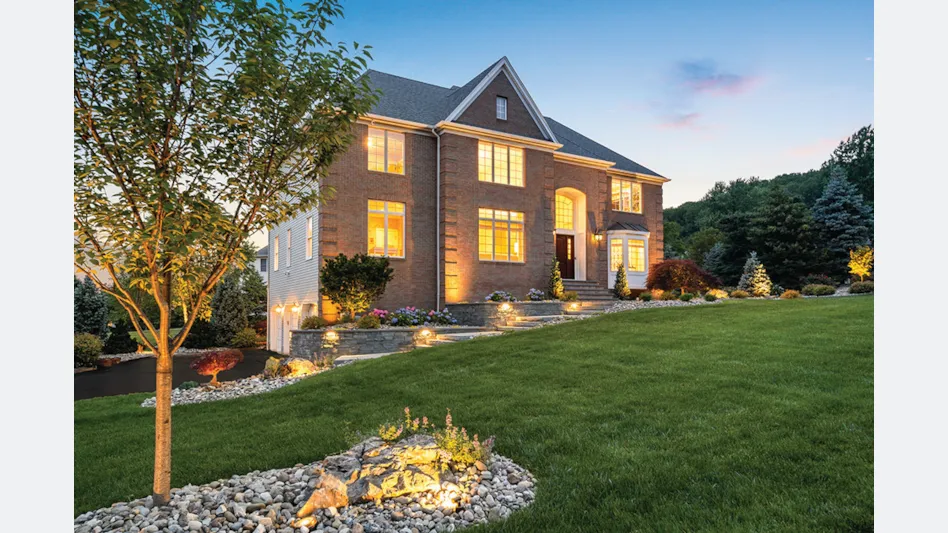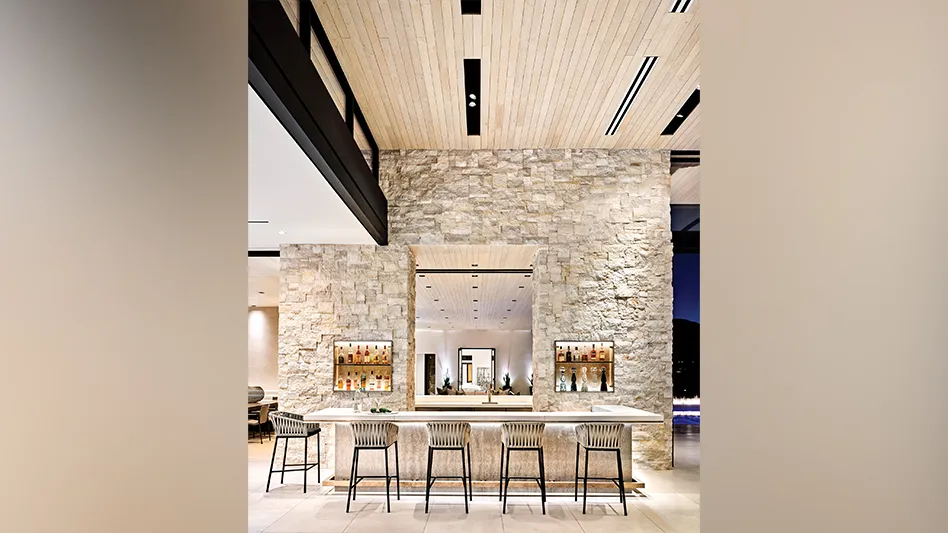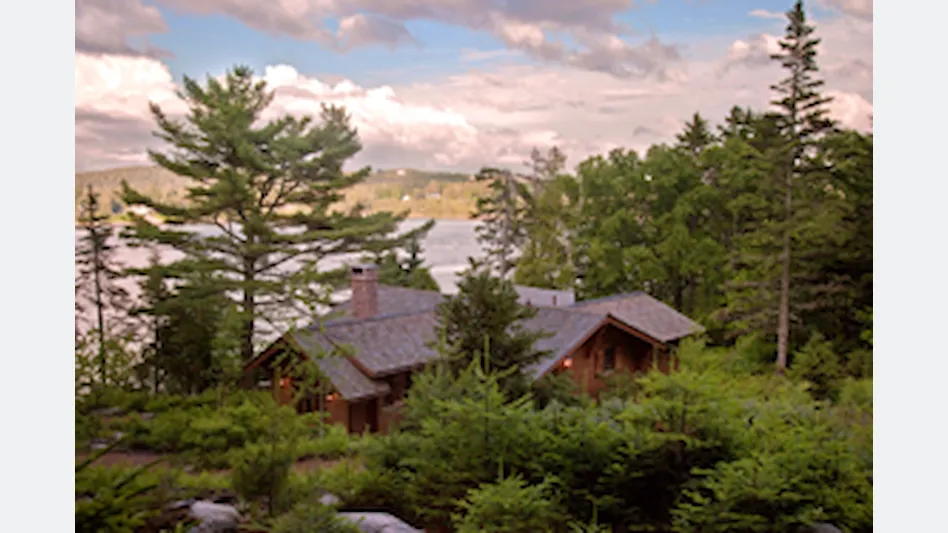
This is the first installment of Designer’s Notebook, a series that brings you great photos of high-end landscape designs from across the country, and commentary from respected designers on the details that make it stand out.
We chose this coastal Maine installation for a few reasons. It’s a wholesale rehab of a storm-damaged site. It required tremendous engineering to withstand the amount of water the mountain sees every season. And it’s a sustainable and thoughtful approach to its environment. – Chuck Bowen
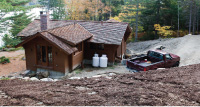 The site is steeply sloped, at the base of Flying Mountain, near Acadia National Park on Mount Desert Island. A bad storm and house construction had left the property raw and destroyed.
The site is steeply sloped, at the base of Flying Mountain, near Acadia National Park on Mount Desert Island. A bad storm and house construction had left the property raw and destroyed.
We started in June. During the five-month construction period, we lived on the property. What we saw was beyond any of our possible imaginations: two solid months of record rainfall. There was more than one night that James was outside at two or three in the morning, in a thunderstorm, digging trenches to redirect water away from the house.
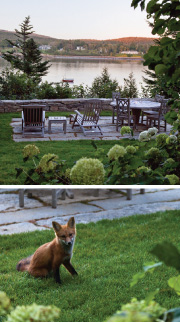 (Cunningham) consulted with an engineer and the systems got beefed up significantly. If we hadn’t been living on site, I am not sure that any of us would have really understood how much water moved through that hillside. – James Barrett and Susanna Jewell, Gardenform Landscape Construction, Deerfield, Mass.
(Cunningham) consulted with an engineer and the systems got beefed up significantly. If we hadn’t been living on site, I am not sure that any of us would have really understood how much water moved through that hillside. – James Barrett and Susanna Jewell, Gardenform Landscape Construction, Deerfield, Mass.
I was engaged by the client to restore the devastated property after severe weather events caused extreme erosion across much of the landscape. I am originally from coastal Maine and working within the context of Acadia National Park was incredible.
My design philosophy focused on regenerating the fragmented landscape and restoring damaged site systems. The new low-maintenance landscape embraces environmentally sustainable concepts and blends seamlessly with the island’s distinctive ecological context. The remarkable absorbent qualities of the property are hidden among carefully imagined landscape experiences.
Comprehensive stormwater management strategies shape new landforms, resulting in elegant grading and thoughtful drainage solutions. Massive above- and below-grade stormwater management systems easily handle major storm events, yet remain virtually invisible.
Exquisitely crafted new masonry, built from an authentic palette of local reclaimed materials, gives the garden a unified, established feel. Every stone used in the garden is hand-selected. Lichen encrusted stone retaining walls define edges, thresholds and overlooks, and thick slabs of salvaged granite embedded in the earth provide gathering terraces and pathways. – Matthew Cunningham, Mathew Cunningham Landscape Design, Melrose, Maine
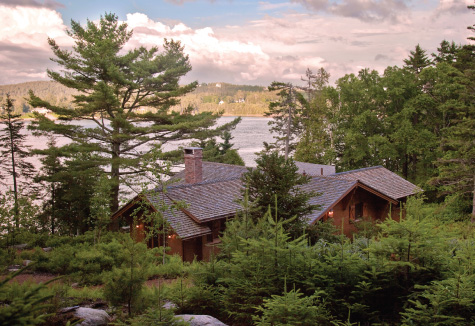
This project creates a true sense of place through excellent design and craftsmanship. It is hard to imagine that this hillside was at one time devastated, for the home appears to truly belong to the site.
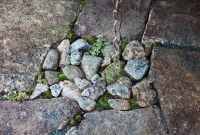 The strongly unifying principle of simplicity ties all of the photos together: stone, plant and wood, shown in grays, greens and browns. Only a lone area of Annabelle hydrangeas peaks out of the sea of naturally arranged native greens.
The strongly unifying principle of simplicity ties all of the photos together: stone, plant and wood, shown in grays, greens and browns. Only a lone area of Annabelle hydrangeas peaks out of the sea of naturally arranged native greens.
The many appearances of stone show how Cunningham deftly displayed the dynamic properties of a material. The Maine granite seems to naturally break through the verdant cover in instances of pavement, wall, sitting spots, and even an area of stepping stone made entirely of carefully arranged small stones.
Simple, strong and true. The photo of a red fox resting on the lawn speaks volumes on how well this design naturally fits into its setting. Wonderful project. – Bill Healy, APLD
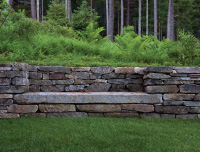 The stone work at Le Petit Chalet proves God is in the details. The craftsmanship and creative details yield hardscape elements that are both beautiful and functional. My favorites are the retaining wall bench, the stone under the lawn table and the stone firewood holder.
The stone work at Le Petit Chalet proves God is in the details. The craftsmanship and creative details yield hardscape elements that are both beautiful and functional. My favorites are the retaining wall bench, the stone under the lawn table and the stone firewood holder.
The bench beckons one to sit and enjoy the peaceful setting of ferns entering the woods. The stone is old and weathered, giving a sense the bench has been there for hundreds of years. This single element expands the garden’s use.
Likewise, the stone laid out like an area rug beneath a table set on a soft green lawn appears whimsical and beckons one to sit, relax and soak up the scenery.
The Stonehenge-like slabs of rock holding firewood are a perfect example of form and function. This landscape element verges on contemporary yet stops short because the slabs aren’t cut to match. Brilliant! – Kathy Snyder Hubner, APLD TCNP
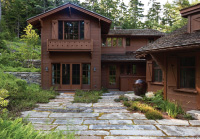 The biggest challenge to any landscape designer is to create a garden that emulates a natural environment. With his deep knowledge of the native plant material and his sensitivity to the site contour, Cunningham was able to create an illusion that the house had been sited in a clearing in the woods.
The biggest challenge to any landscape designer is to create a garden that emulates a natural environment. With his deep knowledge of the native plant material and his sensitivity to the site contour, Cunningham was able to create an illusion that the house had been sited in a clearing in the woods.
To see the before and after images of this project, is to believe in the healing power of the land when someone decides to do the correct site remediation, and select the correct plant material.
When I look at the image of the house with its large granite stone patio and the plants being allowed to grow naturally around the perimeter, it evokes a gentle feeling that this house is asking for permission to stay, while nature grows all around it. – Amelia B. Lima, APLD

Explore the March 2012 Issue
Check out more from this issue and find you next story to read.




